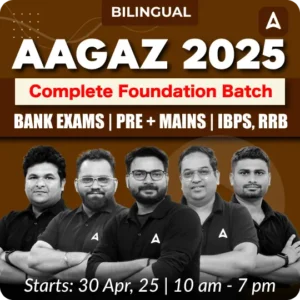Table of Contents
Seating Arrangement Reasoning: The seating Arrangement topic is one of the most asked topics of the reasoning section. The questions from this topic are asked in prelims and mains exam of every banking examination. The seating arrangement questions contain a good weightage of marks and candidates are advised to study and prepare well in order to improve the overall marks in their exams. Today in this article we will be reading about the Seating Arrangement preparation tips and tricks with the solved examples.
Seating Arrangement Reasoning
It is the dream of many candidates to work in the banking sector. Lakhs of candidates appear for the banking exam as well every year. The reasoning section requires a lot of practice and conceptual knowledge. Though every topic in the section is important and should be prepared well, today we will discuss the preparation tips and tricks of solving the Seating Arrangement questions.
What is Seating Arrangement?
Seating Arrangement is the sitting process of a group of people in a prefixed manner. The questions asked from the seating arrangement are based on a set of information that includes certain conditions.
Types of Seating Arrangement
There are majorly 3 types of seating arrangement is there from which questions are asked in the examination.
- Linear Seating Arrangement: The questions from the linear seating arrangement are asked based on the single and multiple rows. Types of linear seating arrangement are:
a) Single Row Unidirectional: In this, people will be arranged in a single row that will be facing the same direction.
b) Single Row Bidirectional: In this, people will be arranged in a single row, and they will face two different directions.
c) Dual Row: People will be arranged in 2 different rows.
2. Circular Seating Arrangement: In this type of question, people will be seated in a circular row.
a) Circular Unidirectional: In this type of question, people will sit in a circular row facing the same direction.
b) Circular Bidirectional: In this type of question, people will sit in a circular row facing different directions either outside or inside.
3. Polygonal Seating Arrangement: In this type of seating arrangement, people will sit in different polygon-shaped figures such as squares, rectangles, triangles, etc.
4. Concentric Arrangement: In this type of question, one polygon shape will be placed inside the other polygon shape and then people will sit around the same.
Tips and tricks to solve Seating Arrangement Questions
The tips and tricks to solve the seating Arrangement questions are provided below.
- The first step is to analyze and collect all the direct statements provided in the puzzle.
- Note down all the negative statements provided in the puzzle, if any.
- Write all the information that you have gathered in a simplified form so that you do not have to look at the confusing paragraph over and over again. E.g. if the statement is “P sits 3rd to the right of Q” then you can simply write it as “Q →3R P”.
- Make sure to draw different arrangements in advance because you will have to make possibilities.
- Do not stick to any possibility just because it’s almost complete. Keep canceling out the possibilities as you proceed that do not follow or go against the information that is provided in the puzzle.
- At last, there will be only one positive that you will have at the end that will be following all the positive as well as the negative statements given in the puzzle and that would be the required solution.
- Practice makes a man perfect so make sure you practice as much as you can.
Questions of Seating Arrangement
Directions (1-5): Study the information and answer the given questions:
Six members A, B, C, D, E, and F of a family sit around a triangular table in such a way three persons are sitting on three sides of the table facing inside while three persons are sitting at three corners facing outside. There are three generations and two married couples in this family. Each person has a different age. The oldest person of the family sits second to the left of F who is the mother of E. C sits second to the right of his mother whose age is square of an even number. E sits second to the left of his wife. A is the grandfather of B. E is four years older than his wife. F is 6 times older than B. E has no siblings. The oldest person is 65years old. E is not an immediate neighbor of C’s grandmother. F is 5years younger than her husband. B is 4 years older than her brother. The one whose age is an odd number does not face inside.
Q1. Who among the following is the mother of C?
(a) E
(b) F
(c) B
(d) D
(e) None of these
Q2. What is the age of E’s mother?
(a) 36years
(b) 60years
(c) 45years
(d) 58years
(e) None of these
Q3. How B’s mother related to the E’ father?
(a) Sister in law
(b) Daughter
(c) Daughter in law
(d) Wife
(e)None of these
Q4. What is the age difference between C’s grandfather and D?
(a) 20years
(b)10years
(c) 30years
(d) 29years
(e)None of these
Q5. Which of the following is true about F?
(a) D is husband of F
(b) B is granddaughter of F
(c) F is 50years old
(d) C is son of F
(e) None is true
Directions (6-10): Study the following information carefully and answer the questions given below:
P, Q, R, S, T, U and V are seven players, who play for the same team. In a match meeting, they all are sitting around a circular table facing to the center. Also each player has to complete his training, which is assigned to them. No two player can complete their training at the same time and no two adjacent player finish their training immediately one after the other.
P completes his training immediately before Q. R sits third to the left of S but completes his training after S. Q sits to the immediate left of V. T sits to the immediate left of the player, who completes his training before two players. U completes his training immediately after Q but not after R. The number of players who complete their training before V is same as the numbers of players, who complete their training after V. U sits 2nd to the right of person who completes his training 1st.
Q6. Who sits fourth to the right of Q?
(a)U
(b)R
(c)P
(d)V
(e)None of these
Q7. How many players complete their training before P?
(a) 1
(b) 5
(c) 4
(d) 2
(e)None
Q8. Which of the following is the seating order in anticlock-wise direction from point S(Including S)?
(a) S, Q, P, R, U, V, T
(b) S, U, P, R, T, V, Q
(c) S, Q, V, P, R, U, T
(d) S, T, Q, V, R, P, U
(e)None of these
Q9. Who completes his training immediately after R?
(a) Q
(b) V
(c) P
(d) S
(e) None of these
Q10. Who among the following sits to the immediate right of S?
(a) P
(b) U
(c) T
(d) V
(e) None of these
Directions (11-15): Study the following information carefully and answer the questions given below:
Eight persons, A, B, C, D, E, F, G, and H are sitting in a straight line (but not necessarily in the same order). Three of them are facing south and rests are facing north direction. They all have their lucky numbers i.e. 12, 13, 37, 47, 52, 17, 25, and 18 (not necessarily in same order).
F sits right of C. E’s lucky number is a prime number. G and E face opposite direction. C’s lucky number is average of E’s lucky number and F’s lucky number. B sits third from the extreme end of the row. H’s lucky number is at least less than two numbers among all the given numbers. C doesn’t face north direction. G is an immediate neighbor of C and E both. B faces south direction. B’s lucky number is less than G’s lucky number but greater than H’s lucky number. D sits 2nd to the right of G. C sits immediate left of B. H sits 3rd right of C. The one, who sit at corner, has lucky number is a prime number and both of them face same direction. All the friends who sit left of D, those lucky numbers are less than the lucky number of D who face north. E’s lucky number is greater than at least three numbers among all the given numbers. The one whose lucky number is 17 doesn’t sit, immediate right of D and immediate left of F. H sits left of F.
Q11. Who among the following is second to the left of the one whose lucky number is 52?
(a) The one whose lucky number is 13
(b) Both (c) and (e)
(c) G
(d) None of these
(e) The one whose lucky number is 18
Q12.What is the lucky number of C?
(a) 12
(b) 47
(c) 37
(d) 25
(e) None of these
Q13. Who among the following sits third to the right of the one whose lucky number is 25?
(a) B
(b) C
(c) A
(d)H
(e) None of these
Q14. What is the position of F with respect to the one whose lucky number is 37?
(a) Second to the left
(b) Third to the left
(c) Second to the right
(d) Fourth to the right
(e) None of these
Q15. C faces in which direction?
(a) North
(b) South
(c) Same as D faces
(d) Both (a) and (c) are true
(e) None is true
Solutions:
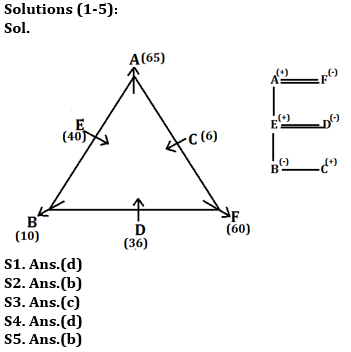
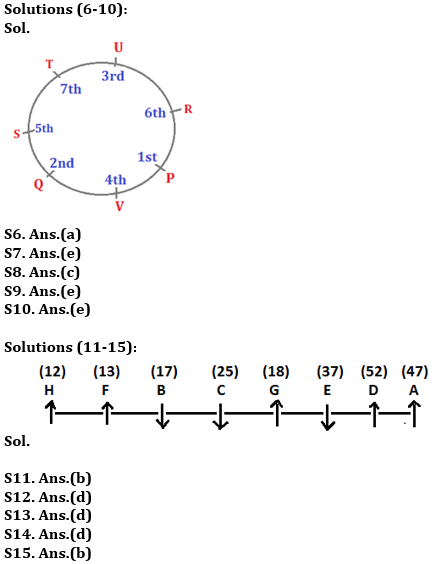

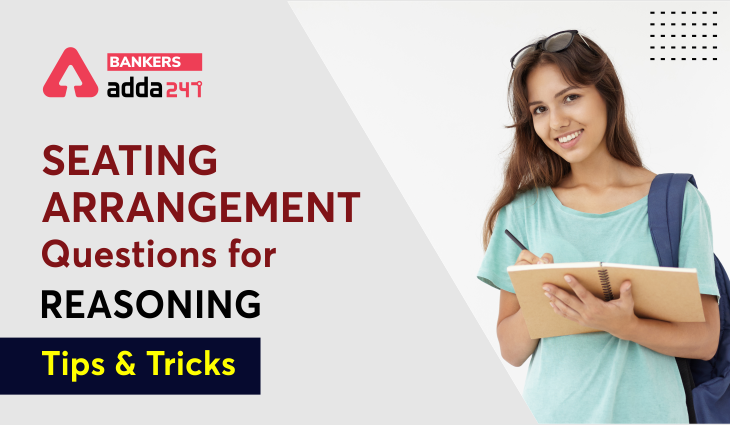

 GA Capsule for SBI Clerk Mains 2025, Dow...
GA Capsule for SBI Clerk Mains 2025, Dow...
 The Hindu Review October 2022: Download ...
The Hindu Review October 2022: Download ...
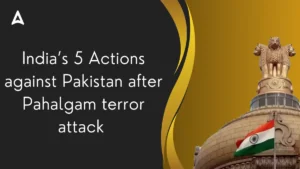 India’s 5 Actions against Pakistan after...
India’s 5 Actions against Pakistan after...

